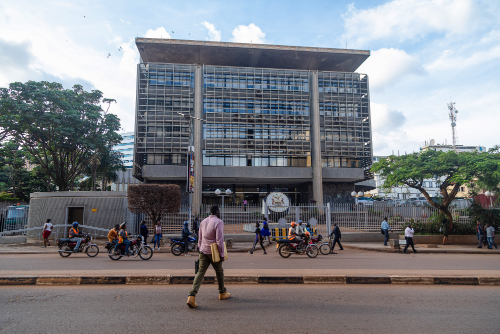Uganda to Launch $5.5B Tokenised Economy and Pilot Digital Shilling

TLDR
- Diacente Group has partnered with US-based Global Settlement Network (GSN) to roll out a $5.5 billion plan to build national digital infrastructure
- The effort will link farms, mines, power projects and factories across the country
- The investment will be financed by tokenised loans and investors from Korea and the Middle East
Diacente Group, a Ugandan developer of green industrial zones, has partnered with US-based Global Settlement Network (GSN) to roll out a $5.5 billion plan to build national digital infrastructure. The effort will link farms, mines, power projects and factories across the country.
A central part of the effort is a pilot of Uganda’s first central bank digital currency (CBDC), known as the digital shilling, which is backed by treasury bonds. The CBDC will enable Ugandans to transact via phones, including basic devices, and directly tie financial flows to real economic activity.
The investment will be financed by tokenised loans and investors from Korea and the Middle East. More than 80 % of Uganda’s workforce is in the informal economy, making the system’s promise of cheaper, faster, transparent trade a potential game changer.
Rollout will begin in the Karamoja Green Industrial & Special Economic Zone (GISEZ), a government-backed industrial zone tied to Uganda’s Vision 2040 plan.
Ryan Kirkley, cofounder of GSN, said the project links technology with real production and ensures local licensing and control. Odongo Solomon, CEO of Diacente, said the move embeds crypto and CBDCs into Uganda’s development roadmap.
Daba is Africa's leading investment platform for private and public markets. Download here
Key Takeaways
Uganda’s new model differs from past CBDC experiments because it integrates digital currency with real assets, not just financial infrastructure. GSN will issue the digital shilling on its permissioned blockchain, with each token backed by Ugandan treasury bonds — giving it a tangible anchor. The plan tokenises infrastructure across sectors like agriculture, mining, and renewable energy, converting physical assets into digital units that can be traded or used as collateral. Because the CBDC will be accessible via smartphones and USSD, even users with basic phones can participate. Compliance tools (KYC/AML) are built in, and all operations are to be licensed and managed locally, keeping Uganda in control. The digital system gives participants a direct reason to use the CBDC: farmers can be paid instantly, small firms can build credit against verified records, and traders can settle payments seamlessly. The approach aims to avoid the low uptake seen in some earlier CBDCs by embedding utility in the economy itself. If successful, the model could be scaled across East Africa, offering a blueprint for nations linking blockchain, industry, and financial inclusion.

Next Frontier
Stay up to date on major news and events in African markets. Delivered weekly.
Pulse54
UDeep-dives into what’s old and new in Africa’s investment landscape. Delivered twice monthly.
Events
Sign up to stay informed about our regular webinars, product launches, and exhibitions.




